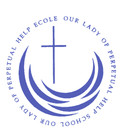English Language Learners (ELLs) may be foreign-born or Canadian born to parents who primarily speak another language or hearing children of Deaf parents. They may also include First Nations, Metis, and Inuit students where traditional languages or multiple languages are spoken at home.
ELLs who are learning English as an additional language must be able to do more than just talk to friends, buy things at a store, or find their way around the city. Students need to understand different ideas and be able to read, write, and talk about the ideas. This is called Academic English. Along with the support of our school's English Language Learner Leader Teacher, our staff offers many different kinds of programming and supports to assist learners to develop English skills while also advancing academically.
